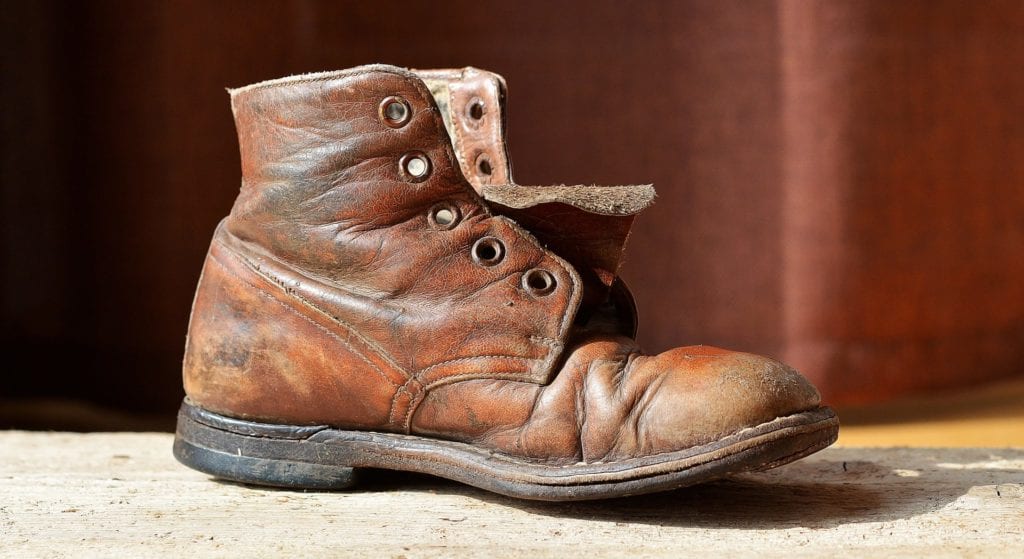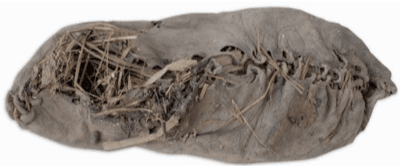The History of the Shoe in Colder Climates

Cold Climate Shoes Throughout History
When Were Shoes First Used?
Archaeologists estimate that the earliest forms of shoes were used about 40,000 to 26,000 years ago. They came to this conclusion as the density of the foot bones found in ancient remains tended to be a lot thinner after this period. They concluded from these findings that wearing shoes, even the rudimentary ones of that era, reduced the bone growth of the toes, resulting in the shorter and thinner toes found in these remains. These early forms of shoes were very simple.
What Were Shoes Made Out Of?
They consisted of a mere sack of leather or “foot bag” and were used to protect the wearer’s feet from hazards such as rocks. They were most commonly found in the colder countries where they were used to protect feet against the cold as well. One of the earliest remains of a shoe in the colder Scandinavian countries was a leather shoe which is estimated to have been made between 1800 to 1100BC.
These moccasins had soft soles wrapped tightly and comfortably around the foot. They were made from leather, mostly bison hides. The North American Indians would decorate these moccasins with beads. There is a shoe museum located in Toronto which has a collection of shoes dating from 4,500 years ago until now.
 In many of the other countries that had warmer climates such as Egypt, Africa and the Middle East, sandals were the shoe of choice to accommodate the hotter climate. However in the colder climates people needed shoes that protected their feet from the cold. The boots of the early times originally consisted of three separate components, these were the leggings, soles and uppers. Eventually these components all joined together in around 1000BC to form the prototype of the boots we know today.
In many of the other countries that had warmer climates such as Egypt, Africa and the Middle East, sandals were the shoe of choice to accommodate the hotter climate. However in the colder climates people needed shoes that protected their feet from the cold. The boots of the early times originally consisted of three separate components, these were the leggings, soles and uppers. Eventually these components all joined together in around 1000BC to form the prototype of the boots we know today.
The Inuit and Aleut’s of Alaska developed winter boots made from caribou skins or seal skins and they would often incorporate decorations, including dog hair tassels and more. Boots, like the shoes of the era were designed with the same lasts and were designed to fit either right or left foot. The boot itself was defined and entered into a codified law by the Duke of Wales during the Hundred Years War.
How Were Shoes Designed?
Many of the European boots were designed according to the military styles of the day with thick soles and turned down tops. These boots ultimately were the basis for the cowboy boots worn in the Wild West. Shoes and boots remained very much the same in shape and style throughout the centuries. Men and women’s shoes had very little difference between them.
They also had the same lasts, which means there was no difference between the left and the right shoe. It was only in 1818 that the first right shoe was made. These left and right foot shoes were produced in Philadelphia. In 1873, Jan Matzeliger changed the face of shoe making. He was born in 1852 in Italy and studied as a shoemaker.
After moving to the United States in 1873, he designed and patented the first shoe lasting machine in 1883. This revolutionised the shoe making process, and also helped to reduce their prices, making them more freely available. As the twentieth century dawned, shoes were designed to be fashion statements, and not mere protection for the feet.
Lasts were changed so that shoes had a right and left foot, making them into more comfortable shoes (click here for the guide). Shoes designed specifically for men and women with women’s shoes being more decorative and striking. Styles such as the Oxford, Derby, and Loafer for men and the stilettos, mules and sling backs for women were developed. Today there are thousands of different styles and types of shoes and boots on the market. For more on the history of shoes click here.